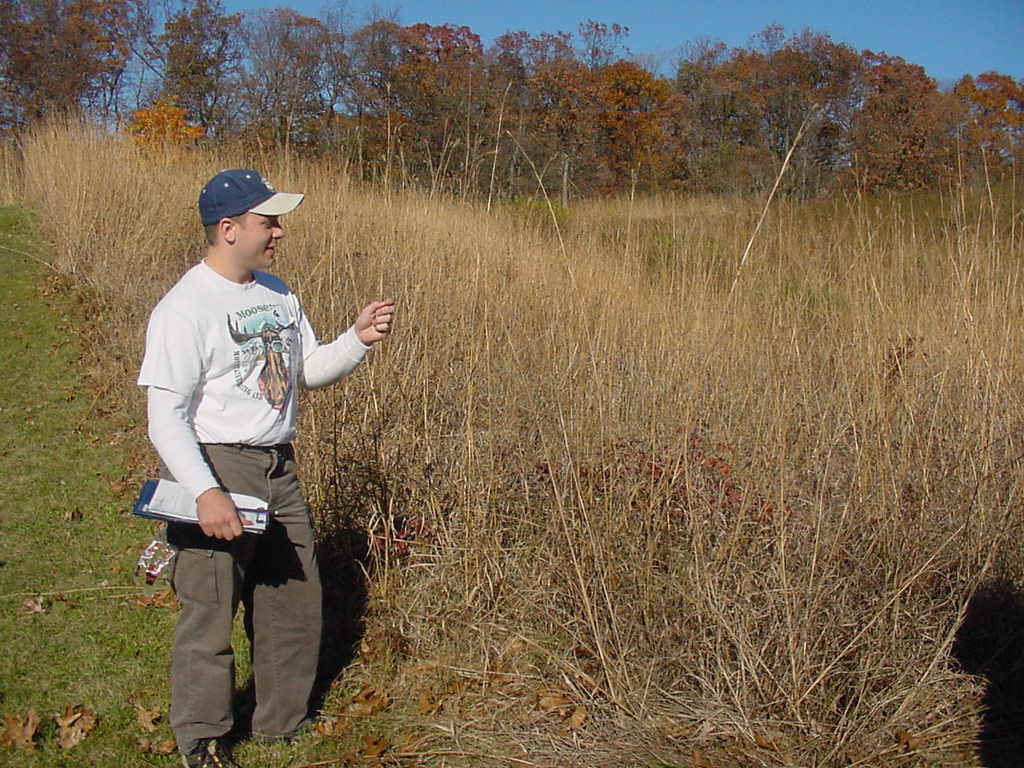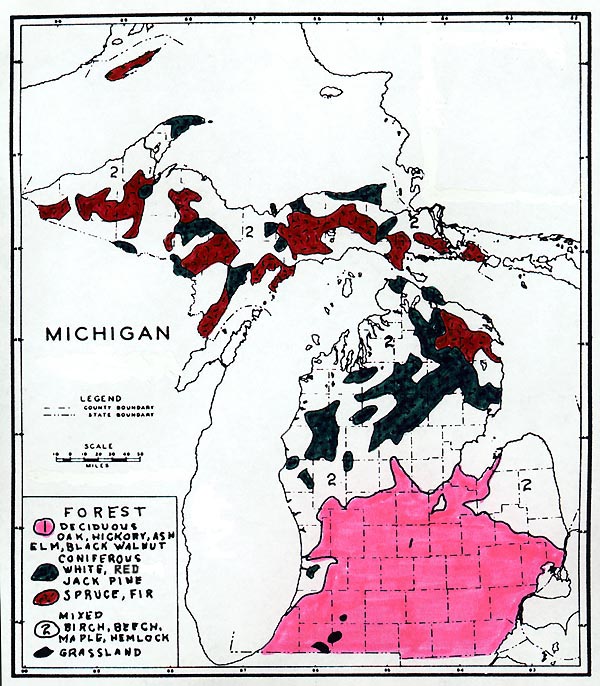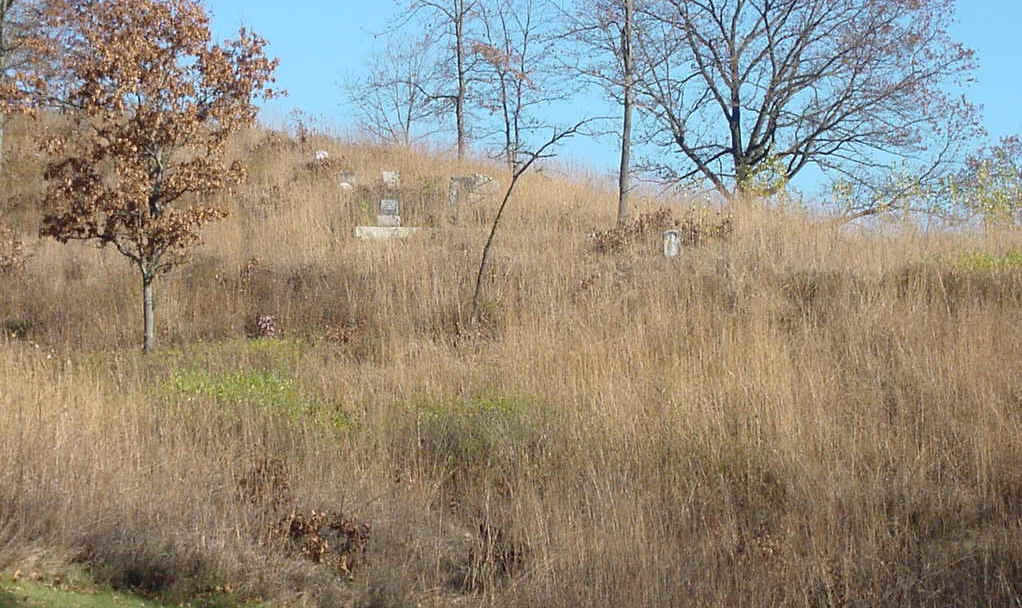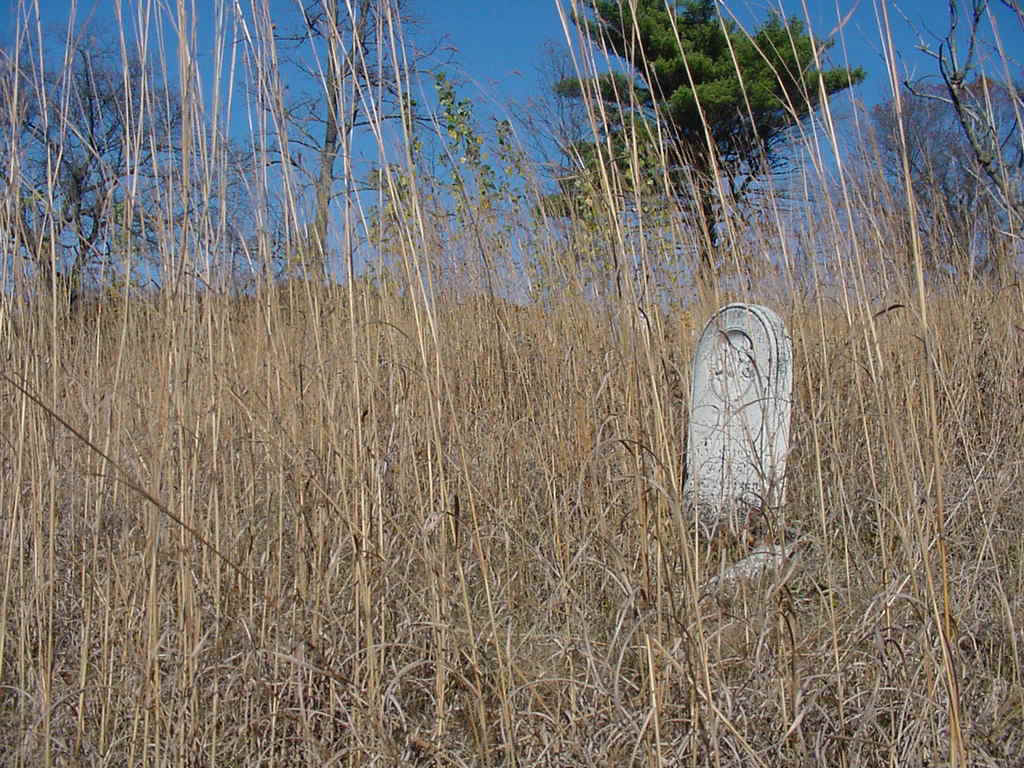Prairies are a type of grassland, a landscape dominated by
herbaceous plants, especially grasses; trees are either absent or only widely scattered on
the landscape. Grasslands occur in many regions, such as the llanos of Venezuela,
the pampas of Argentina, the cerrado and campos of Brazil, the steppes of central Asia,
and the grasslands of Australia. Approximately 32 to 40% of the world's land surface
is, or was, covered by grasslands. Today, grasslands are extremely important for
agriculture, and approximately 70% of the food produced for humans comes from these
regions.
Source: Photograph courtesy of Randy Schaetzl, Professor of Geography -
Michigan State University
Grasslands are the largest vegetation type in North America, covering approximately 15% of
the land area. Prairies are the grasslands found in the central part of the North
American continent. They form a more or less continuous, roughly triangular area
that extends for about 2,400 miles (3,870 km) from Alberta, Saskatchewan, and Manitoba
southward through the Great Plains to southern Texas and adjacent Mexico and approximately
1,000 miles (1,612 km) from western Indiana westward to the foothills of the Rocky
Mountains, covering 1.4 million square miles. Rainfall decreases from east to west,
resulting in different types of prairies, with the tallgrass prairie in the wetter eastern
region, mixed-grass prairie in the central Great Plains, and shortgrass prairie towards
the rain shadow of the Rockies. Today, these three prairie types largely correspond
to the corn/soybean area, the wheat belt, and the western rangelands, respectively.

Source: Photograph courtesy of Randy Schaetzl, Professor of Geography -
Michigan State University
Michigan lies on the far eastern edge of an area called the
"prairie peninsula," an eastward extension of prairies that borders deciduous
forests to the north, east, and south. This is part of the tallgrass prairie region,
sometimes called the true prairie, with the landscape dominated by grasses such as big
bluestem and Indian grass as well as a large number of other species of grasses and
wildflowers, the latter called forbs. The tallgrass prairie vegetation sometimes
reaches a height of 10 feet or more.

Source: Unknown
How did prairies form?
As the climate became warmer and drier, between 14,000 and 10,000 years ago, a cool mesic
hardwood forest with ash, oak, elm, maple, birch, and hickory trees grew in the midwest.
About 8,300 years ago, the climate became substantially warmer and drier, and within the
relatively short time of 500 to 800 years, most of the forests in southwestern Michigan
died out or got burned down, except along stream banks, and prairies spread over the
landscape. During the last 1,000 years the climate has become slightly cooler and
wetter, making conditions more favorable to trees. Savannas,
characterized by a grassy prairie-type ground cover underneath an open tree canopy, are
common in areas that border the prairies. Scattered out on the prairie were patches
of rich forests completely surrounded by prairie; these forests are called prairie groves.
Prairies developed and were maintained under the influence of three
major non-biological stresses: climate, grazing, and fire. Occurring in the central part
of North America, prairies are subject to extreme ranges of temperatures, with hot summers
and cold winters. There are also great fluctuations of temperatures within growing
seasons.

Source: Unknown
During periods of drought, trees died and prairie plants took over previously forested
regions. When rainfall was abundant and fires few, the trees and forest were able to
reestablish themselves. Prairie fires, started either by lightning or by Native
Americans, were commonplace before European settlement. Any given parcel of land probably
burned once every one to five years. These prairie fires moved rapidly across the prairie,
and damaging heat from the fire did not penetrate the soil to any great extent. Fire kills
most saplings of woody species, removes thatch that aids nutrient cycling, and promotes
early flowering spring species. Today fire also is beneficial to control non-native
herbaceous species that can invade prairie remnants.
A considerable portion of the above ground biomass of a prairie was
consumed each year by the grazing of a wide range of browsing animals, such as bison, elk,
deer, rabbits, and grasshoppers. This grazing was an integral part of the prairie
ecosystem, and therefore grasslands and ungulate mammals coevolved together. Grazing
increased growth in prairies, recycles nitrogen through urine and feces, and the trampling
opens up habitat for plant species that prefer some disturbance of the soil. Prairie
plants have adapted to these stresses by largely being herbaceous perennials with
underground storage/perennating structures, growing points slightly below ground level,
and extensive, deep root systems. The tender growing points of prairie plants occur
an inch or so below ground and are usually not injured by prairie fires, which move
rapidly across the prairie. These underground growing points are also left unharmed
by browsing animals. During droughts, the deep roots of prairie plants are able to
take up moisture from deep in the soil.
Prairie remnants exist today in areas that have been
repeatedly burned, because fire assists the grasses and eliminates woody plants that might
otherwise overtop the grasses and shade them out. The best places to find prairie remnants
are along old RR rights of way, which occasionally were burned as sparks and cinders were
thrown out of passing trains. Prairie remnants are also observable in old cemeteries built
originally on patches of prairie. The last prairie remnant in Monroe County, the
Minong Prairie, is found just 13 miles north of the Ohio/Michigan state line within the
Petersburg State Game Area.
Prairies in Kalamazoo County
Source: Peters,
B.C. 1970. Pioneer evaluation of the Kalamazoo County landscape. Michigan
Academician 3(2): 15-25.
Today, most of Michigan's prairies have been converted to agriculture, as this image
below, from Iowa, shows (with prairie in the foreground and corn in the background).
Source: Photograph courtesy of Randy Schaetzl, Professor of Geography -
Michigan State University
Still, some areas of prairie exist in Michigan, such as this one in Middleville, in SW
Michigan. This particular prairie is located within a cemetary, and for that reason
it has not been plowed or otherwise destroyed. Like many prairies, it requires
occasional fires to keep woody vegetation at bay. The Nature Conservancy bought the
cemetery and occasionally does burn it, preserving the tallgrass character of the place.

Source: Photograph courtesy of Randy Schaetzl, Professor of Geography -
Michigan State University

Source: Photograph courtesy of Randy Schaetzl, Professor of Geography -
Michigan State University
The first European settlers moving westward from the forests of the eastern United
States encountered the prairies, which seemed like a vast ocean of grass. The wind caused
waves on the surface of the shimmering grasses. One type of wagon used by the
pioneers was the "prairie schooner," a reference to a sailing vessel, further
adding to the analogy of the prairie being a large inland sea of grasses. It was
easy to get lost in the prairie, especially since there were few trees or other natural
features to act as landmarks. Even when on horseback, it was often not possible to
see across the prairie to the horizon. Today, many of these landscapes are in irrigated
corn. A few oaks remain as a testament to the presettlement forest vegetation that
surrounded the prairies (the oak openings).
Source: Photograph courtesy of Randy Schaetzl, Professor of Geography -
Michigan State University
Click here for some links to web sites devoted to prairies.
This material has been compiled for educational use only, and may not be reproduced without permission. One copy may be printed for personal use. Please contact Randall Schaetzl (soils@msu.edu) for more information or permissions.